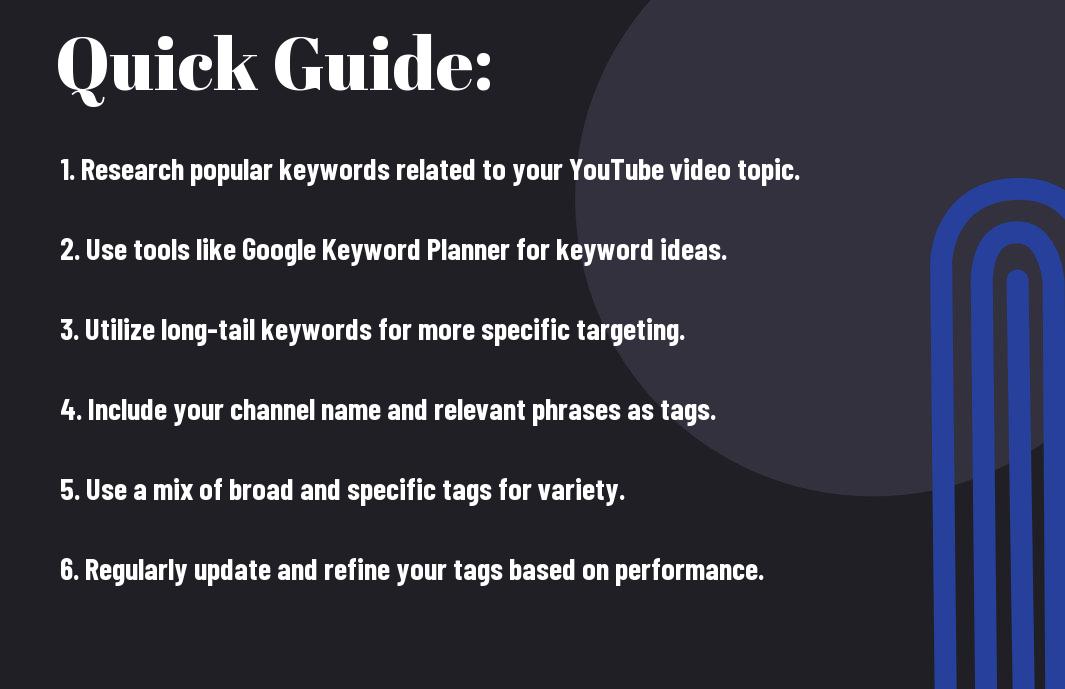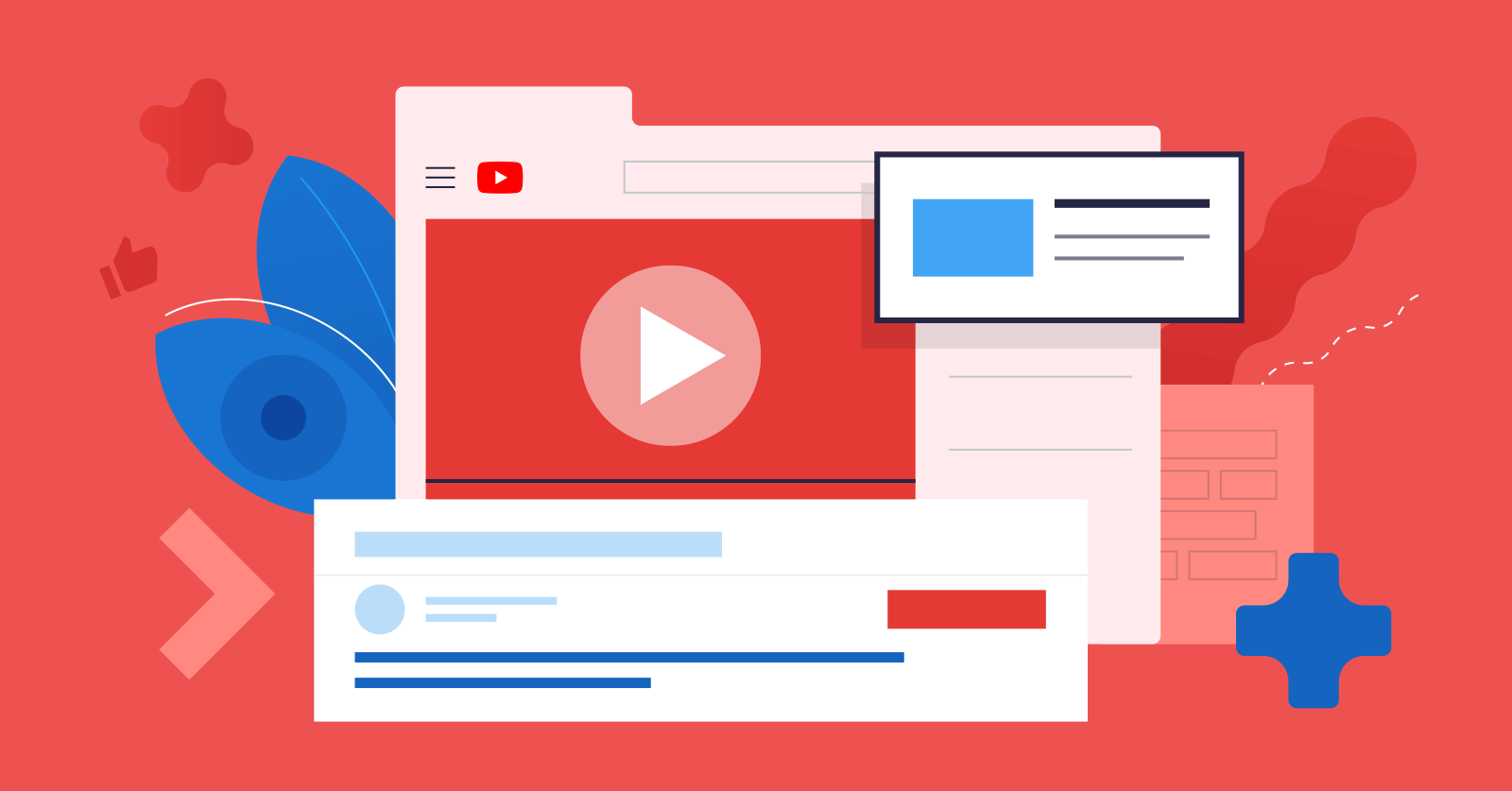
The Ultimate Guide To Optimizing Your YouTube Tag Strategy
Master YouTube Tag Optimization with this comprehensive guide! Learn best practices, keyword research, & strategies for explosive growth.
Embarking on the endeavor of perfecting your YouTube presence can seem daunting, but fear not, for we have compiled The Ultimate Guide To Optimizing Your YouTube Tag Strategy. Harnessing the power of proper tags can be the key to unlocking the full potential of your channel, increasing your visibility, and ultimately growing your audience. In this comprehensive guide, we will dissect the intricacies of YouTube tags, providing you with the invaluable knowledge needed to propel your videos to the top of search results. To delve even deeper into the world of YouTube optimization, be sure to check out our article on YouTube SEO Tips: How to Optimize Your Videos for Search.
Key Takeaways:
- Relevant Tags: Ensure your tags are directly related to the content of your video to increase visibility.
- Long Tail Keywords: Utilize long tail keywords in your tags to target specific audience segments and improve search ranking.
- Competitor Analysis: Research your competitors' tags to identify popular and relevant keywords to incorporate into your own strategy.
- Consistency: Maintain a consistent tag strategy across all your videos to build a cohesive brand and improve overall discoverability.
- Monitoring and Adjusting: Regularly monitor the performance of your tags and make adjustments based on analytics and trends to stay competitive in the YouTube algorithm.

Understanding YouTube Tags
Clearly, YouTube tags play a crucial role in helping your videos get discovered by the right audience. Understanding how to optimize your tags can lead to increased visibility and engagement for your channel.
Definition and Types of Tags
YouTube tags are words or phrases that you can add to your video to help viewers find your content when they search on the platform. There are two main types of tags: specific tags that directly describe the content of your video and generic tags that are broader and more general. It is important to use a combination of both types of tags to maximize the discoverability of your videos on YouTube. This keyword strategy can significantly impact your video's performance and reach.
- Specific Tags:
- chocolate chip cookies
- cookie recipe
- baking cookies
- chewy cookies
- kitchen tips
- add chocolate chips
- cookie ingredients
- baking tutorial
- Generic Tags:
- cookies
- baking
- desserts
- kitchen hacks
- easy recipes
- chocolate
- how to
- DIY
This strategic use of YouTube tags can make your videos more relevant and visible to potential viewers, ultimately helping you grow your channel's audience and engagement.
How Tags Affect YouTube SEO
Tags are a crucial component of YouTube SEO, as they directly impact how your videos are categorized and recommended to users on the platform. By including relevant tags that accurately represent your content, you can improve the likelihood of your videos appearing in search results and related video suggestions. Additionally, using highly targeted tags can help your videos rank higher in YouTube's search results, increasing their visibility to potential viewers.
Tags also contribute to the overall metadata of your video, which YouTube's algorithm considers when determining the relevance and quality of your content. This means that optimizing your tags can have a direct impact on your video's performance and discoverability on the platform. By understanding how to strategically use tags, you can enhance your YouTube SEO efforts and increase the overall success of your channel.
The Anatomy of a Successful Tag Strategy
To succeed on YouTube, a successful tag strategy is essential. Tags are words or phrases that help describe your content and make it easier for users to find your videos. A well-crafted tag strategy can increase the visibility of your videos and attract more viewers.
Factors Influencing Tag Effectiveness
On YouTube, several factors influence the effectiveness of your tags. Keywords, or the words and phrases that people use to search for content, play a crucial role in tag effectiveness. Competition for these main keywords also impacts how effective your tags will be in helping your content rank higher in search results. After all, tags that are too generic or highly competitive may not help your video stand out.
Pros and Cons of Various Tagging Approaches
Competition aside, understanding the pros and cons of different tagging approaches is essential. By utilizing short-tail and long-tail tags, you can capture a broader audience while also reaching a more targeted one, respectively. It's important to pay attention to relevance as well, ensuring that your tags accurately reflect the content of your video and are likely to attract the right audience.
Step-by-Step Guide to Optimizing Your Tags
Your YouTube tag strategy is a crucial aspect of your overall video optimization. It helps your content get discovered by the right audience and improves your video's ranking in search results. In this chapter, we will walk you through the step-by-step process of optimizing your tags for maximum visibility and reach.
| Step | Description |
|---|---|
| 1 | Identify target keywords and phrases |
| 2 | Research related and trending tags |
| 3 | Create a comprehensive and diverse tag list |
| 4 | Implement tags strategically in your video metadata |
Preparing Your Tag Research
For optimizing your tags, the first step is to conduct thorough research on the keywords and phrases relevant to your video content. Use tools like YouTube's autocomplete feature, Google Keyword Planner, and other SEO tools to identify popular and trending keywords within your niche. This research will lay the foundation for crafting a strong tag list that resonates with your target audience.
Crafting Your Tag List
Crafting your tag list is a critical part of your YouTube tag strategy. Once you have gathered your keyword research, it's time to craft a comprehensive tag list that includes both broad and long-tail keywords. Group your tags into categories such as primary, secondary, and long-tail tags to maintain a good balance of relevance and reach. This will ensure that your video is discoverable by a wide range of potential viewers.
The crafting of your tag list is essential for improving your video's searchability and discoverability. By including a mix of popular and niche-specific tags, you can increase the chances of your video appearing in relevant search results and attracting organic traffic. The strategic placement of these tags in your metadata can greatly impact your video's performance and reach on the platform, ultimately contributing to the success of your YouTube channel.
Tips for Advanced Tag Optimization
Unlike basic tag optimization, advanced tag optimization requires a deeper understanding of YouTube's algorithm and the ability to leverage competitor analysis to gain a competitive edge. Here are some tips to take your tag strategy to the next level:
- Understanding YouTube's Algorithm Updates
- Leveraging Competitor Analysis
Understanding YouTube's Algorithm Updates
Advanced tag optimization requires a thorough understanding of YouTube's algorithm updates. It's crucial to stay updated on the latest changes and how they can impact the visibility of your videos. By staying ahead of the curve, you can adapt your tag strategy to align with YouTube's algorithm and maximize your video's reach.
Leveraging Competitor Analysis
The key to advanced tag optimization lies in leveraging competitor analysis to gain insights into what tags are working for other successful videos in your niche. By analyzing your competitors' tags, you can identify opportunities to target keywords with high search volume and low competition, giving your videos a competitive advantage.
Additionally, competitor analysis allows you to identify trends and patterns in tag usage, helping you refine your own tag strategy for better performance.
Advanced tag optimization also involves analyzing your own performance and adjusting your tag strategy accordingly. By monitoring the performance of your tags and iterating on your approach, you can continuously improve the visibility and reach of your YouTube videos.
Making Adjustments to Your Tag Strategy
Keep your tag strategy dynamic by regularly monitoring and updating your tags to ensure they are effective and relevant. As your channel and content evolve, so should your tag strategy. By making adjustments to your tag strategy, you can improve the visibility and discoverability of your videos, ultimately driving more traffic to your channel.
Monitoring Tag Performance
Monitoring the performance of your tags is crucial in determining their effectiveness. Utilize YouTube analytics to track which tags are driving the most traffic to your videos. Look for patterns in the tags that are performing well and consider incorporating similar tags into your future videos. On the flip side, identify tags that are underperforming and consider replacing them with more relevant and popular tags.
When and How to Update Your Tags
Your tag strategy should be updated regularly, especially when you notice shifts in search trends or changes in your content focus. Keep an eye out for new keywords or trending topics in your niche, and incorporate them into your tag strategy to stay relevant and capture new audiences. When updating your tags, consider the relevance, popularity, and competitiveness of the tags to ensure they align with your video content and help maximize your reach.
Strategy should be flexible and adaptable to changes in the YouTube landscape. By staying proactive in updating your tags, you can stay ahead of the competition and continue to grow your channel's visibility. It is essential to keep in mind that the goal of updating your tags is to optimize their performance and maximize the impact of your video content.
Common Pitfalls to Avoid
After honing your YouTube tag strategy, it’s important to be aware of common pitfalls that can hinder your success. By avoiding these pitfalls, you can ensure that your videos are optimized to reach the right audience and maximize your visibility on the platform.
Overusing Irrelevant Tags
The overuse of irrelevant tags is a common mistake that can negatively impact your video’s performance on YouTube. While it may be tempting to include a wide range of tags in an effort to increase visibility, using irrelevant tags can actually harm your video’s ranking and credibility with YouTube’s algorithm. Instead, focus on using tags that are closely related to the content of your video and reflect the actual themes and topics being discussed.
Ignoring YouTube's Tagging Policies
Irrelevant to YouTube's tagging Policies is another pitfall to avoid. Ignoring YouTube’s guidelines for tag usage can result in your video being penalized or even removed from the platform. It’s essential to familiarize yourself with YouTube’s policies and stay updated on any changes to ensure that your tag strategy remains compliant.
Pitfalls like overusing irrelevant tags and ignoring YouTube’s tagging policies can have detrimental effects on your video’s performance and visibility. By adhering to YouTube’s guidelines and focusing on using relevant tags that accurately reflect your video’s content, you can avoid these pitfalls and set yourself up for success on the platform.
Summing up 'The Ultimate Guide To Optimizing Your YouTube Tag Strategy'
In conclusion, optimizing your YouTube tag strategy is crucial for boosting the discoverability and visibility of your videos. By following the tips and techniques outlined in this guide, such as using relevant tags, conducting keyword research, and utilizing tools like TubeBuddy, you can effectively enhance your video's search rankings and maximize its potential reach. With the right tag strategy in place, you can increase your chances of attracting more viewers and growing your channel.
Remember, the key to a successful tag strategy is consistency and relevance. Regularly updating and refining your tags based on current trends and user behavior will ensure that your videos remain competitive and continue to attract new viewers. By implementing the insights from this guide, you can take your YouTube tag strategy to the next level and start reaping the benefits of improved visibility and engagement for your channel.
FAQ: The Ultimate Guide to Optimizing Your YouTube Tag Strategy
Q: What are YouTube tags and why are they important?
A: YouTube tags are words or phrases that help categorize and describe your video content. They are important because they can significantly impact how your videos are discovered and recommended to viewers.
Q: How can I choose the best tags for my YouTube videos?
A: When choosing tags, consider using relevant keywords related to your video content, as well as popular search terms in your niche. You can also use tools like YouTube's search bar and third-party keyword research tools to find the most effective tags.
Q: How many tags should I use for each YouTube video?
A: YouTube allows you to add up to 500 characters worth of tags for each video. While there is no specific limit to the number of tags you can use, it's essential to prioritize quality over quantity and focus on using tags that accurately represent your video content.
Q: Can I update my YouTube video tags after I've published the video?
A: Yes, you can update your video tags at any time after the video has been published. Simply navigate to the "Edit Video" section in YouTube Studio and make the necessary changes to your tags.
Q: How can I measure the effectiveness of my YouTube tag strategy?
A: You can measure the effectiveness of your YouTube tag strategy by using YouTube Analytics to track the performance of your videos. Look for metrics such as traffic sources, search terms, and click-through rates to gauge the impact of your tags on your video's visibility and reach.

Sai Bharath
Founder
As a seasoned web developer and passionate blogger, I blend a rich background in computer science with a flair for creating engaging digital experiences. With a degree in computer science, I have honed my skills in coding, design, and user experience. My blog showcases the latest trends in web development, practical coding tips, and insights into the ever-evolving tech landscape. I have created this Tool site for developers and marketerrs as a gift for them to use it freely.

.jpg)

